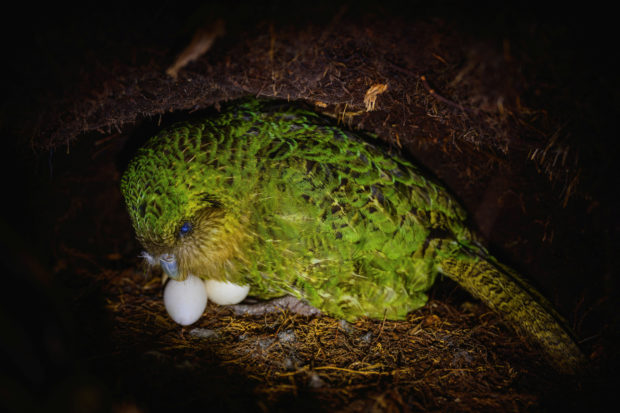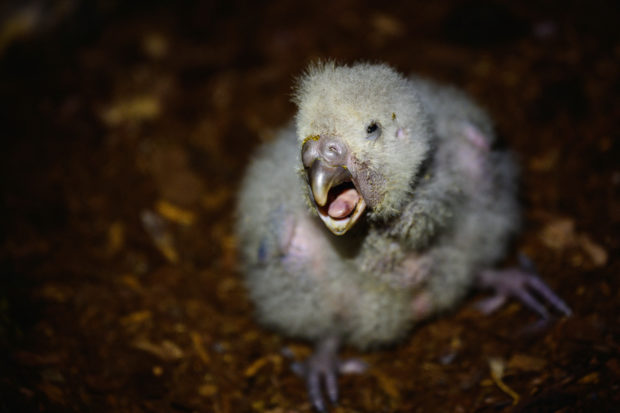New Zealand’s endangered kakapo parrot gets a big population boost

A Kakapo parrot sits on its eggs in this undated handout image, in New Zealand in this undated handout image. Jake Osborne – Department of Conservation/Handout via REUTERS
WELLINGTON — The population of New Zealand’s kakapo, an endangered flightless parrot, has increased 25% in the last year to 252 birds following a good breeding season and success with artificial insemination, the conservation department said Tuesday.
The kakapo have been nearly wiped out by introduced predators such as stoats as the birds cannot fly. The problem has been exacerbated by inbreeding, very low fertility – only 50% of eggs are fertilized – and as they only breed every two or three years when native rimu trees fruit.
The population of the kakapo, which is the world’s heaviest parrot, is now at its highest number since the 1970s.
“There were just 86 kakapo when I first started working as a kakapo ranger in 2002. That number was scary. Having a breeding season with 55 chicks feels like a very positive step,” said Deidre Vercoe, operational manager for the kakapo recovery programme.

A Kakapo parrot sits in its nest in this undated handout image, in New Zealand. Jake Osborne – Department of Conservation/Handout via REUTERS
The program was established in 1995. It is a collaboration between the New Zealand conservation department and Maori tribe Ngai Tahu and uses volunteers to help with activities like monitoring the nests to keep them out of trouble. Some birds have had to be rescued after getting stuck in the mud or after their legs were caught in trees.
Article continues after this advertisementVercoe said in an email that much of the success this season was due to the amount of fruit on rimu trees.
Article continues after this advertisementSuccess with artificial insemination this season was also key. Eight surviving chicks were born from artificial insemination, compared to just five in the decade to 2019.
“Using artificial insemination has meant that some males, who had not yet naturally fathered chicks, are still represented in the future gene pool,” said Vercoe.
“Artificial insemination can also help to increase fertility of the eggs laid.”
RELATED STORIES
Modern phoenix: The bird brought back from extinction in Japan
Endangered bird spotted in Pangasinan
Conservationists welcome birth of endangered bird chick in Negros Occidental